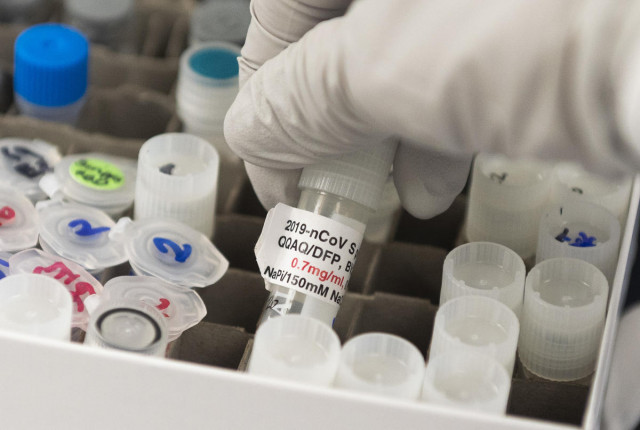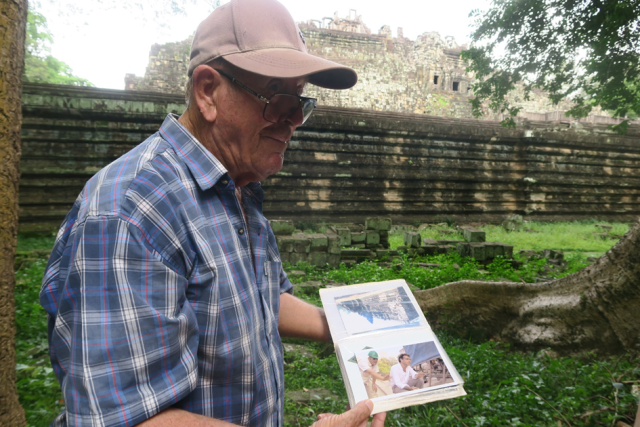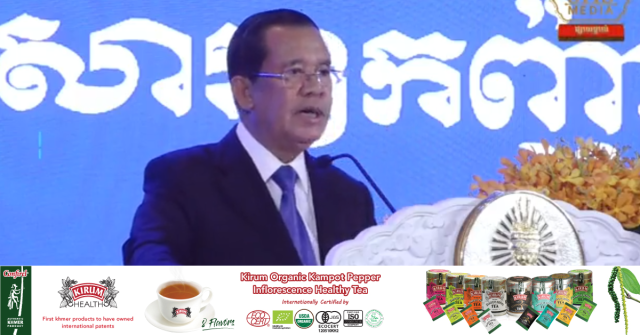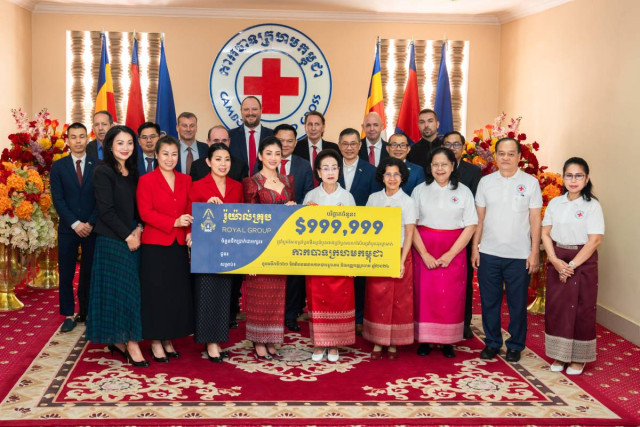About a Pagoda, a Boat Racing in the Water Festival from Father to Son, and Tradition
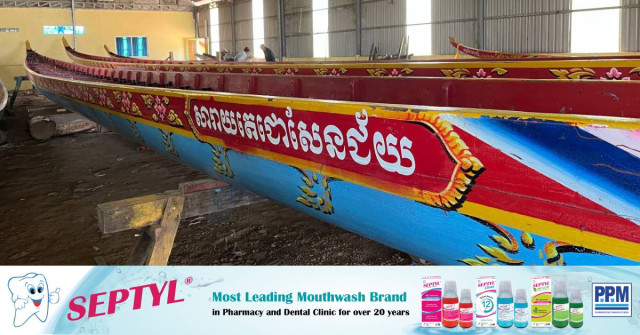
- By Torn Chanritheara
- November 25, 2023 8:45 AM
PHNOM PENH — The Pichey Raingsey Pagoda is home to “Saray Techo Sen Chey,” one of the well-known—and fastest and most decorated—boats in Kandal province with a long history.
During an interview at the Puk Russey pagoda in Ksach Kandal district, San Sok Heang recalled how he became involved in boat due to his father’s last wish and ultimately built a new boat, naming it “Saray Techo Sen Chey.” Sok Heang’s father was a rower himself.
The name of the boat has a history going back to the 1500s, Sok Heang said. But its modern history started in 1948. While the boat has changed many times as years went by, its name remains associated with “Saray” and the current one was named in 2012.
“In the past, while my father was still alive, I was never interested in this,” he said. “At that time, my father was a boatman. But when I was working for a company in Preah Vihear province, I went to meet a boat builder. Because of my father’s wish, I decided to buy it.”

Sok Heang had never had any intention of buying a boat, he said, but because of his father’s wish and the price that was not high, he bought a normal one in 2010. Later on, he bought a longer boat that could accommodate up to 77 rowers.
Sok Heang explained the various types of wood that are good for making boats, which is a tradition in Cambodia going back to the reign of King Jayavarman VII in the late 12th century, he said.
Wood from the koki tree—known for its resistance to water, strength and its long-straight trunk unlike other trees—is the best wood for building a boat, Sok Heang said.
An 800-Year-Old Tradition: a Mix of History and Religious Belief
Historically, the festival goes back to the Angkorian era.
In 1177, the Khmer’s sworn enemy, the Cham, raised troops to invade and control Cambodia. Jayavarman VII gathered support and, having developed a strategy, fought the Cham until victory in 1181, using naval forces and boats as the means of transportation.
He ascended to the throne in 1181 and made the country highly prosperous.
This event led Cambodians to hold this festival to commemorate the heroic victory of the Khmer Navy.
The Water Festival is also associated with other ceremonies, such as the floating of lanterns and the worship of the moon, which are reflection of religious beliefs.
The floating lanterns—which usually bear the emblems of state institutions—aim to be reminders of the importance of Water and the Earth, which provide happiness, good harvest for agriculture and daily livelihood for farmers. In addition to the floating lanterns, there also are fantastic firework displays that make the event even more noisy and festive.
On the second day of the festival, which falls on the 15th day of Kakdeuk—one of the lunar months of Cambodia’s traditional calendar—there will be another ceremony called the Ok Ambok (eating roasted flattened ripe rice) and Sampeah Preah Khe (worshipping the moon). Cambodians would hold the event to commemorate the bodhisattva who was born as a rabbit on the moon after offering his life to the deity Indra.
Cambodians would gather together at night and eat bananas and other fruit, and drink coconut juice.

Continuing the tradition…
The Puk Russey pagoda, located in Kandal province’s Puk Russey commune, has seven boats—two long boats and five shorter dragon boats—according the Abbot Phat Sok Nim. One of them is the boat named Saray Techo Sen Chey that, since 2014, has competed in a special category during the water festival: the category of long boats with nearly 80 rowers.
Venerable Sok Nim said that his pagoda has been involved in perpetuating the tradition for many generations as the previous abbots were vivid boat fans and there are always boats hosted by the pagoda.
“We love this tradition [left by our ancestors] and people in this community love boats,” the abbot said. “Moreover, it’s also related to history. We don’t want to lose it by any means.”
To carry on with this festival, the abbot said, it needs contributions from all actors including the pagoda’s leadership and the authorities to support the boat, protecting the boat.
“We need to help each other to continue this longstanding tradition,” he said.






